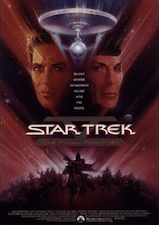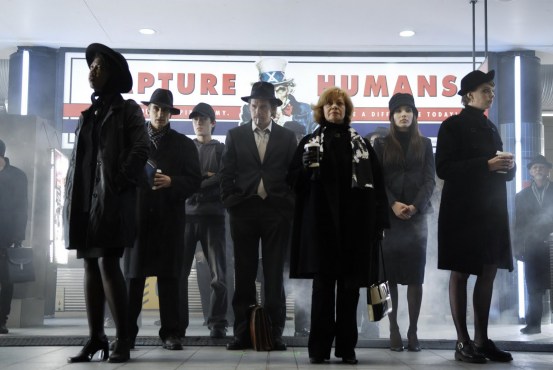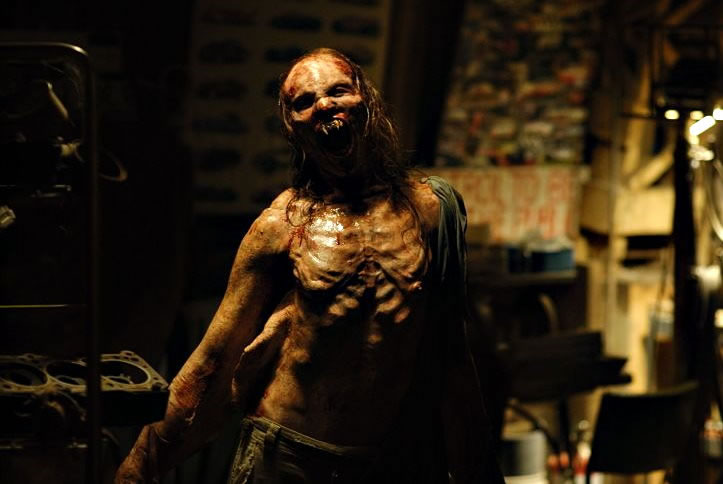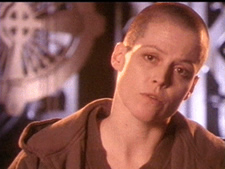 The Star Trek movie franchise is one of the most inconsistent string of films in existence. While some franchises are either mostly good or mostly terrible, the Star Trek movies swing like a pendulum from amazing to awful. Conventional wisdom among Trekkies states that every other film is good, and my experience pretty much verifies this. The first one in the franchise spends well over two hours chasing Kubrick’s coattails and ends up being a mess of heavyhanded philosophizing, but its sequel, Wrath of Khan, is considered one of the greatest science fiction movies of all time. And so the pendulum swing begins, with Search for Spock floundering while Voyage Home soars. The pattern being established, then, things don’t look good for Final Frontier from the get-go, even though it’s directed by William Shatner.  If anyone can do justice to a Star Trek film, it’s Captain Kirk, right?  Unfortunately, the pattern holds true: Final Frontier is a poorly written, haphazardly directed, logic-defying science fiction disaster.
The Star Trek movie franchise is one of the most inconsistent string of films in existence. While some franchises are either mostly good or mostly terrible, the Star Trek movies swing like a pendulum from amazing to awful. Conventional wisdom among Trekkies states that every other film is good, and my experience pretty much verifies this. The first one in the franchise spends well over two hours chasing Kubrick’s coattails and ends up being a mess of heavyhanded philosophizing, but its sequel, Wrath of Khan, is considered one of the greatest science fiction movies of all time. And so the pendulum swing begins, with Search for Spock floundering while Voyage Home soars. The pattern being established, then, things don’t look good for Final Frontier from the get-go, even though it’s directed by William Shatner.  If anyone can do justice to a Star Trek film, it’s Captain Kirk, right?  Unfortunately, the pattern holds true: Final Frontier is a poorly written, haphazardly directed, logic-defying science fiction disaster.
Things begin with a bit of promise, as all the trappings of classic science fiction are present and accounted for: Mysterious Distant Planet? Check. Strange aliens? Check. Hints at a violent struggle–a system to be overthrown–and an allegorical savior figure, check.  We then meet our intrepid Captain James Kirk (affably played, as always, by the great William Shatner), free-climbing mountains in Yosemite with all the fervor a post-middle-aged guy can muster, and soon find and his pal Bones (DeForest Kelley) him teaching Spock (Leonard Nimoy) how to sing Row, Row, Row Your Boat around a campfire. It’s a tad endearing, and all in all not a bad start for the film.
It’s not long before things spiral hopelessly out of control, with Starfleet sending Kirk and his aging crew off to the aforementioned Distant Planet to figure out what is going on with Sybok, the man who has taken over the only settlement on the planet. Why Starfleet would send Kirk on a dangerous mission with a brand new Enterprise that is clearly not ready for a trip around the block, much less across the galaxy, is the first of many such asteroid-sized plot holes in the movie that is just too big to overlook. Sybok, no doubt cribbing from a few self-help books, persuades all of Kirk’s loyal companions to follow him and turn against their fearless captain. With the flip of a couple switches, the Enterprise gallivants off to the mythical Great Barrier at the center of the galaxy all because Sybok thinks he will get to have tea with the Almighty. Turns out the mythical Great Barrier is a) about five minutes away, and b) about as impenetrable as a kleenex, meaning Sybok and company sail right through as easily as if they were heading off to Risa for a cup of earl gray.
The final showdown with God has all the drama of a middle school play, but it does give Shatner a chance to ask one of the great questions that has plagued mankind since the dawn of time:
Meantime, those darn Klingons keep causing trouble (wouldn’t you if Kirk had blown up your starship two movies earlier?), and the fabled Enterprise crew is reduced to uttering one-line expositions while staring blankly at the bridge viewscreen. The movie is an exercise in futility, and the special effects are as cheesy as a jar of Velveeta (though to be fair, this wasn’t entirely Shatner’s fault).  Even though a few lighthearted and genuinely entertaining bits are scattered here and there, it’s like having to sidestep piles of horse manure to pick up some candy at a parade.  As Kirk and his bros enter into a reprise “Row Row Row Your Boat” to close out the film, the best we can do is wish that the film would have also been left ‘but a dream.
Rating:[Rating:1/5]
























